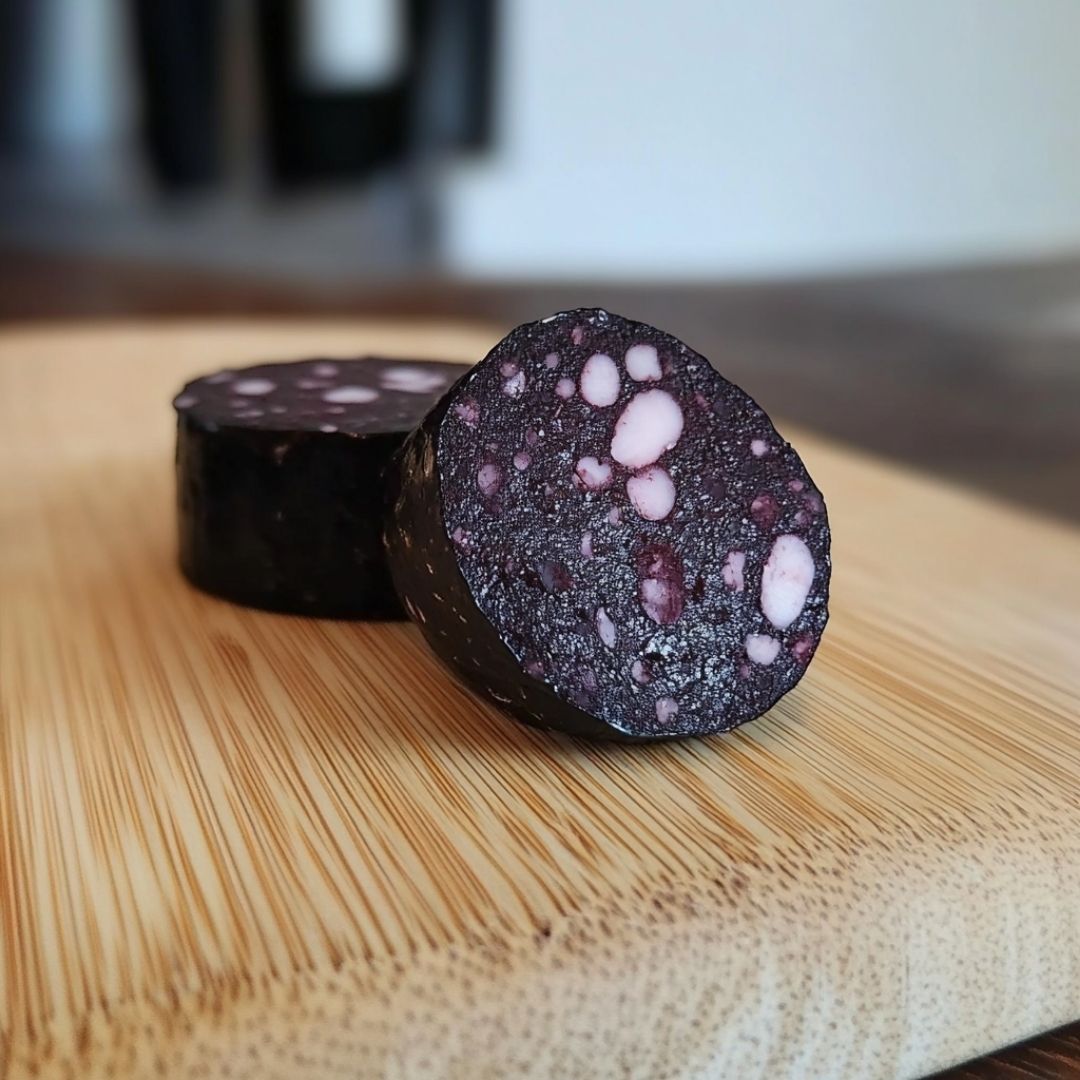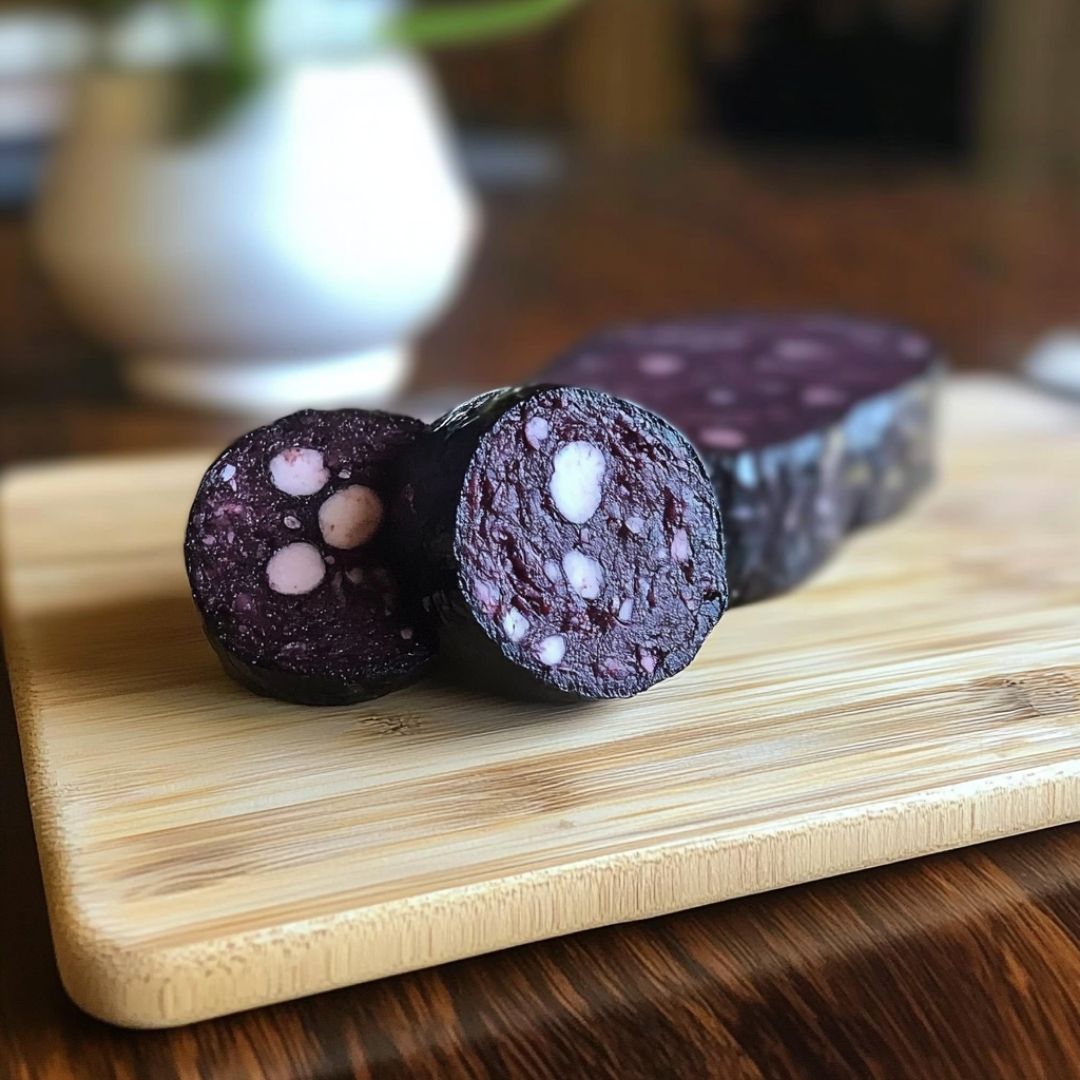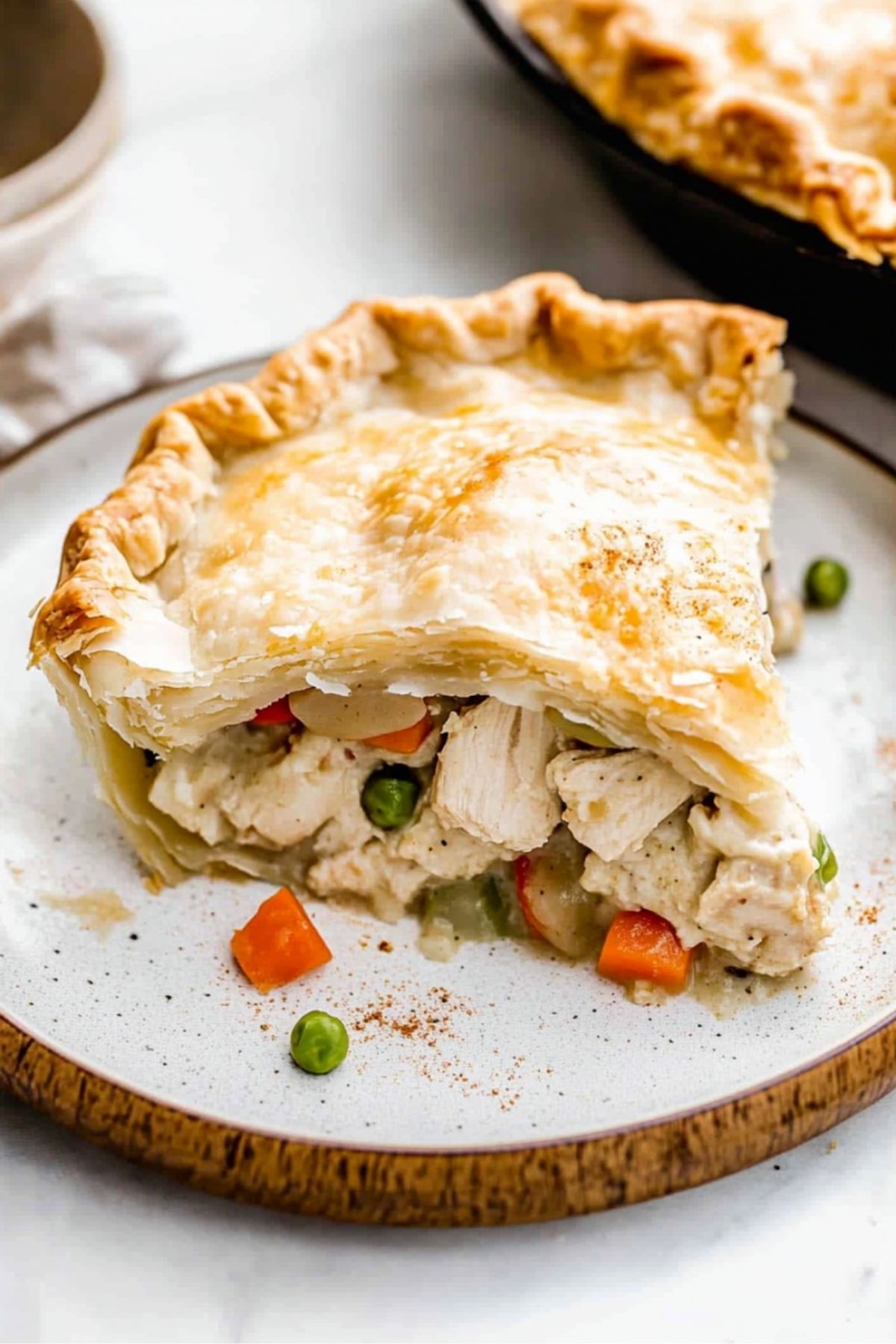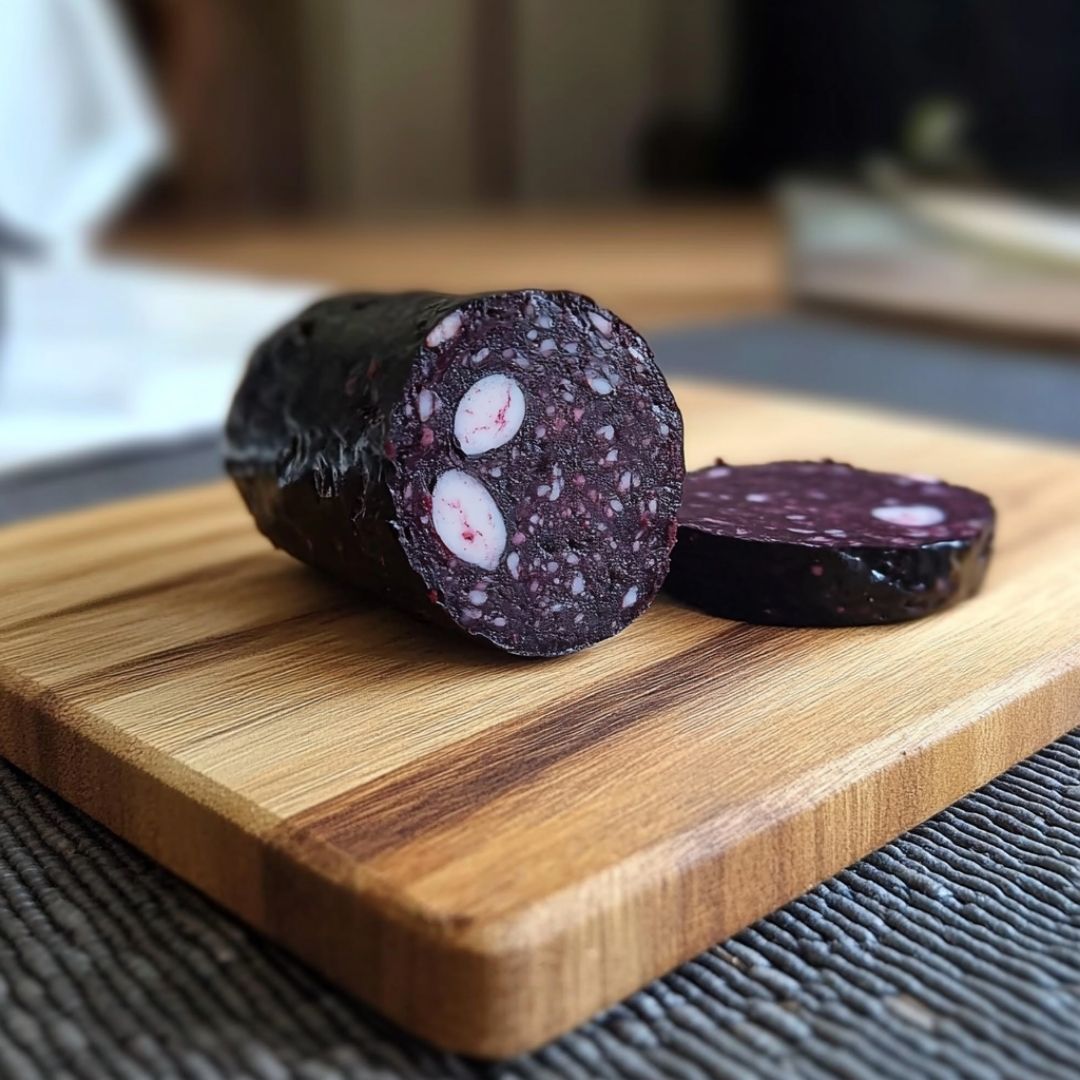There’s something special about revisiting old-world dishes, especially ones with deep roots and bold flavors. This blood pudding recipe brings history to your table, blending rich, savory ingredients with textures that are both hearty and satisfying. Whether you’re curious about traditional fare or reconnecting with culinary heritage, blood pudding is a dish that commands attention. In this article, you’ll discover how to make authentic blood pudding step by step, learn why it’s banned in some places, and get answers to the most commonly asked questions. Plus, I’ll show you where it fits among other comforting, meat-forward favorites like braised short ribs and dirty rice.

Table of Contents
Table of Contents

Blood Pudding Recipe
- Total Time: 2.5 hours
- Yield: 6 servings 1x
Description
A traditional blood pudding recipe made with dried pig’s blood, pork fat, grains, and spices, slow-cooked sous vide and crisped in a pan.
Ingredients
50 g dried pigs blood
350 ml water
150 g pork back fat, diced whilst frozen
1/4 large onion, diced
190 g porridge oats, blitzed
25 g pearl barley, cooked and drained
2 g black pepper
1 g mace
3 g ground coriander
5 g salt
Black pudding casings
Instructions
1. Cook pearl barley for 75 minutes. Drain and cool.
2. Sweat diced pork fat and onion for 5 minutes on low heat. Cool.
3. Whisk dried blood with water. Strain to remove clumps.
4. Mix blood, fat, onion, oats, barley, and spices.
5. Spoon into casings, squeeze tight, tie off with twine.
6. Vacuum seal and cook sous vide at 83°C for 45 mins.
7. Chill in ice bath, then refrigerate.
8. Slice and pan-fry until crisp.
Notes
Use frozen pork fat for easier dicing.
Don’t skip the sieve step—it ensures a smooth, even mix.
- Prep Time: 30 minutes
- Cook Time: 2 hours
- Category: Dinner
- Method: Sous Vide
- Cuisine: British
Nutrition
- Serving Size: 2 slices
- Calories: 270
- Sugar: 0g
- Sodium: 580mg
- Fat: 21g
- Saturated Fat: 8g
- Unsaturated Fat: 10g
- Trans Fat: 0g
- Carbohydrates: 13g
- Fiber: 2g
- Protein: 9g
- Cholesterol: 50mg
Keywords: blood pudding, black pudding, traditional sausage, pork recipes
The Story & Intro
Blood Pudding Recipe with Tradition and Heart
A Dish with History and Soul
Growing up, I was always fascinated by recipes that made the most of every ingredient. My grandmother used to tell stories about how her parents would save, repurpose, and honor every part of an animal—especially during hard times. Blood pudding was one of those dishes. It wasn’t just food; it was tradition. A savory slice of something passed down through generations. It was dense, peppery, and a little mysterious to me as a child—but once I tasted it properly crisped in a pan, I understood. That deep, almost smoky richness became unforgettable.
When I first tried recreating the blood pudding recipe in my own kitchen, I did so with hesitation. I wasn’t sure if it would be appreciated by modern palates. But after one bite, served alongside easy pepper steak and pastina comfort food, I saw that this old-world recipe still had a place at the table. And trust me—if you love bold flavors, you’ll crave this.
Understanding the Blood Pudding Recipe
The recipe begins with dried pig’s blood, water, pork back fat, and aromatics like black pepper, mace, coriander, and onion. To bind everything together, oats and cooked pearl barley are added. Once mixed, the pudding is packed tightly into natural casings, then gently cooked sous vide before being cooled and pan-fried. The final texture is firm yet moist, with a complex flavor that’s earthy, spiced, and savory.
Using sous vide ensures the pudding is cooked evenly without drying out—a step that makes a big difference in the end result. And if you’ve tried my easy ground turkey casserole or cowboy butter wings, you know how important that perfect finish can be.
Making Blood Pudding at Home
Crafting a Bold Blood Pudding Recipe from Scratch
Ingredients That Make the Difference
Blood pudding might seem intimidating at first glance, but it’s really about balance—fat, grain, seasoning, and of course, blood. Let’s break down the essentials:
- Dried pig’s blood (50g) is rehydrated with 350ml of water. This forms the savory, iron-rich base that gives blood pudding its signature dark flavor.
- Pork back fat (150g), diced while frozen, melts into the mixture during cooking. This adds richness and moisture, essential for a tender bite.
- Onion (¼ large, diced) brings a subtle sweetness that mellows the strong flavor of blood.
- Porridge oats (190g), blitzed fine, and cooked pearl barley (25g) provide bulk and texture. This combination creates that hearty, toothsome consistency.
- Spices like black pepper, mace, coriander, and salt round it all out. They’re not overwhelming but give the pudding depth and warmth.
- Finally, black pudding casings hold it all together for sous vide cooking and that iconic presentation.
This isn’t just about tossing ingredients together—it’s about respecting their purpose. Much like in my chicken meatloaf, each item has a role in texture, taste, or structure.
Technique Tips for Authentic Texture
Start by cooking the pearl barley thoroughly—at least 75 minutes until tender. Meanwhile, sweat the pork fat and onion gently to release flavors without browning. This step is key. Burned fat will taint the final pudding.
Once the blood is rehydrated and strained, everything gets combined. Stir well, then pack the mixture tightly into the casings using a funnel or piping bag. You want it firm but not bursting.
Vacuum seal each portion and cook at 83°C for 45 minutes. This low and slow sous vide method protects the pudding’s delicate texture. Once cooled in an ice bath, refrigerate until you’re ready to fry.
To finish: slice thick rounds and sear until crispy. Pair with dirty Dr. Pepper or serve with a tangy chutney for contrast.

Blood Pudding Variations and Serving Ideas
Blood Pudding Recipe Variations Across Cultures
Regional Twists on a Classic
While this blood pudding recipe follows a traditional European style, variations of it exist worldwide—and each has its own charm. In the UK, especially in Northern England and Scotland, it’s known as black pudding, and often served at breakfast with eggs and toast. Ireland uses a coarser oat grind, giving their version a firmer bite. Spain’s morcilla often incorporates rice and smoky paprika, while Sweden’s blodpudding is typically served with lingonberry jam.
You can also adapt this base recipe depending on what’s available locally. Don’t have pork back fat? Swap in finely chopped pancetta. Prefer spice? Add a pinch of cayenne or smoked paprika. For a more rustic texture, don’t blitz the oats too finely.
Even within my own kitchen, I’ve tried small tweaks based on what’s in the pantry—like using homemade Cuban bread as a side, or pairing it with garlic butter steak and potatoes for an indulgent dinner plate.
How to Serve Blood Pudding
A well-prepared blood pudding needs little dressing up, but the right sides elevate it even further. Here are my go-to serving suggestions:
- Fry it crispy and pair with sautéed apples or caramelized onions. The sweetness balances the richness.
- Slice and serve atop toast with a poached egg and mustard cream—like a bold twist on brunch.
- Pan-seared and crumbled, it makes a killer addition to hash or as a topping on layered taco dip.
- For a comfort-forward meal, serve it with mashed potatoes, cabbage, and a sharp mustard vinaigrette.
You can even create a sampler platter with small rounds of black pudding, smoked meats, and cheeses—a concept I pulled from trying loaded fries recipes that invite variety on one plate.
No matter how you plate it, remember: the crisp sear is everything. That final frying step brings contrast to the soft interior and adds rich, toasty flavor.
Blood Pudding Facts, Myths, and Final Thoughts
What to Know About the Blood Pudding Recipe Today
Answering the Most Common Questions
Why is blood pudding illegal in the US?
Blood pudding isn’t technically illegal in every state, but USDA regulations around the sale of blood products in food are strict. It’s primarily due to food safety concerns. While you can make it at home using approved ingredients, commercially selling traditional blood sausage in many regions is heavily restricted or outright banned.
How is blood pudding made?
At its core, blood pudding is a mix of animal blood (typically pig), fat, grains like oats or barley, onions, and spices. This blend is packed into casings and cooked gently until firm. Our recipe uses sous vide for precise results, followed by pan-frying for a crispy outer texture.
Is eating blood pudding healthy?
Blood pudding is rich in iron and protein but also high in saturated fat and sodium. Like most traditional dishes, it’s best enjoyed in moderation. It’s similar to other comfort food options like beef tips or shrimp Alfredo—nutritionally dense, but indulgent.
Is black pudding the same as blood pudding?
Yes, “black pudding” is essentially the UK and Irish term for what many call blood pudding. Recipes may vary slightly, but the base of pig’s blood, fat, oats or barley, and seasonings is common to both.
Final Thoughts on Blood Pudding
If you’ve never tried making a blood pudding recipe before, this is your moment. It’s a dish steeped in tradition, bold in flavor, and surprisingly rewarding to prepare. Don’t be afraid of its unique ingredients—embrace them. The result is something rich, earthy, and deeply satisfying.
Try it once and you’ll likely revisit it again and again, especially if you’re into strong, hearty flavors like those in pepper steak or marry me chicken.




